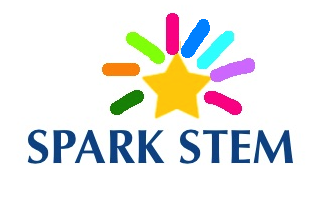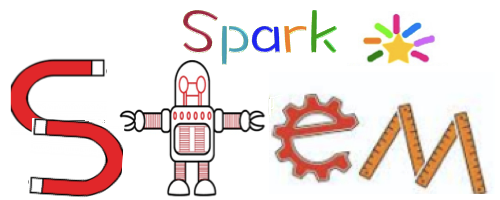Scientific and mathematical modeling
Problem-based Learning
Access through Equitable Teaching Practices
Rigorous Content Knowledge
Knowledge and Confidence as STEM learners
https://www2.gmu.edu/news/430796
The project goals for SPARK STEM is to develop and deliver an integrated STEM PBL Professional development for upper elementary/middle grades(4-6). “Ambitious teaching” which describes “teaching that aims to teach all kinds of students to not only know academic subjects, but also to be able to use what they know in working on authentic problems in academic domains” (Lampert, Boerst, Graziani 2011, p. 1) Yet, this type of teaching is quite challenging because it is not the norm in our schools and requires extensive integrative STEM knowledge for teaching. Similarly, learning to teach math and science has additional demands due to the conceptual and procedural difficulties that math and science presents, particularly for teachers who usually have less than positive experiences and attitudes towards these subjects. By designing a summer institute that has a SPARK STEM lab, teachers will be able to have some “pictures of practice” of what we mean by ambitious teaching. In addition, the SPARK STEM summer labs will be video tapes to serve as exemplars of ambitious teaching using STEM PBL.
Teachers/Coaches participated in
• Seminar/Design institute focused on STEM PBL Design (3 graduate credits)
• Follow-up School-based Lesson Study and video collection of exemplar lessons
Meeting Location: Centreville Elementary School, Centreville VA & George Mason University
Analysis across successfully implemented STEM modeling lessons allowed us to identify key elements, STEM practices and process.
Launch with meaningful Problem based scenario. Inquiry drove the STEM modeling activities by starting from problem formulation and problem decomposition where students needed to research the problem, making assumptions, and defining variables. In the case of the National Park, the launch involved a letter from the national park services. Student were invited to help solve a dilemma. They grappled with the complexities of conservation policies by using cost-benefit analysis. Students will create and take responsibility for a piece of land that will become a new National Park.
Connect to Curricular Standards. The STEM modeling lessons were closely tied to the Math and science standards. In the case of the national park unit, teachers focused on Science SOL 6.9b,d (Earth Resources)-The student will investigate and understand public policy decisions relating to the environment. Key concepts include a) management of nonrenewable resources; b) cost/benefit tradeoffs in conservation policies.
Math SOL 6.10c (Measurement)-The student will solve practical problems involving area and perimeter. There were many more curricular standards addressed and many more STEM modeling pathways teachers considered but based on the time allotted for the unit, they focused primarily on these math and science learning objects.
Iterate to revise and refine solution/thinking. Iterative process of creating a model/prototype with testing and revision. As students were designing their national park, the students were given some parameters: Decide on Shape and Size-cannot be a square or a rectangle and between 300 and 500 square miles. As they drew the plot of land, many used irregular shapes, some that were too small or too big and had to revise their thinking. In addition, student received a budget and supplies to get started and had to revise their design based on their budget constraints.
Analyze the Solution and promote systemic thinking. Solution involved a systemic process and the use of data to make decisions or explain a phenomenon; STEM modeling lessons allowed students to make assumptions and define variables then to build a solution/prototype while constantly analyzing considering the real world context. In the case of the National park lesson, the teacher explained the concept of cost-benefit analysis, highlighting the idea that costs and benefits consist of more than financial
This project was supported by SCHEV The State Council of Higher Education for Virginia






